Oftentimes businesses concentrate their efforts on optimizing individual product pages for SEO, but what about category pages? For ecommerce stores with a large range of products, category pages help with organization and allow customers to easily find what they are looking for.
Aside from that, they also have excellent SEO potential… if you know how to optimize them. I find this is often an area that companies fail to capitalize on so I have created a simple guide on SEO for ecommerce category pages for your benefit – enjoy.
What are Category Pages in Online Stores?
Let’s take a look at the category page first before we jump into the SEO. There are two common types of category pages on ecommerce stores:
- CLP – Category Listing Pages.
- PLP – Product Listing Pages.
CLPs are category pages that predominantly list categories. For example, a clothing store might have a men’s category that then lists the individual categories of men’s clothing like jeans, t-shirts, and jumpers.
In this scenario, the PLPs would be jeans, t-shirts, and jumpers as these are category pages that show mainly groups of individual products. It’s important to understand the difference as you can approach the category page SEO a little differently.
7 Ways to Improve Your Ecommerce Category Page SEO
Customers will have trouble finding the products they want without well-organized category pages but they are also great for SEO similar to how robots.txt optimisation for ecommerce websites can help SEO too. To get you started, I have listed seven simple ways to improve your category page SEO today.
1. Create links to other category pages
Category pages are a prime place to have multiple internal links to other pages or categories on your online store that you want to promote or boost the SEO for. For example, you can have a suggestions section that has links to other similar categories.
For these internal links, make sure the link text is relevant and not just a CTA like “click here”. Generic terms like this for linking words don’t contribute to SEO much whereas using the category name for example, would be more beneficial.
2. Don’t miss out on body text
Some businesses make the mistake of having no body text on their category pages and only featuring a list of products and/or other categories. While you don’t want huge masses of text on your category pages, it is ideal to have at least a few paragraphs.
The text can be something as simple as describing the category and what you can expect from the different sections it contains. Of course, this body text can then be used to add keywords and bolster your SEO.
3. Pay attention to the page headings (H1, H2, H3, etc.)
As with any website page, the heading tags are just as important for ecommerce category page SEO. This is just a great general tip and if you want to make one quick adjustment to your site, go and check your headings!
The heading tags should be optimized in terms of length, grammar, and usefulness, but ideally, they should also contain your primary and secondary keywords where possible. The headings should always read naturally though and be relevant to the category page content.
4. Metadata is essential
Part of ecommerce SEO management is creating optimized metadata for your product pages and this extends to category pages too. The META title and description tags are imperative and should be optimized to be the correct length and contain your targeted keyword for that category at the start.
You still have to make the metadata useful too though and it should always describe the page content properly in a way that customers can easily understand.
5. Make the category navigation clear
Oftentimes category pages have filters to help customers find what they are looking for easier. You should make these filters and category navigation as easy to find as possible. Make it visible, and make it obvious.
Also, make it logical and easy to use! It really irritates me when it feels like I need a degree just to figure out how the filters work!
6. Use specialized links in the store header and footer
Category pages are a great place to add specialized links in the site header and footer. Oftentimes, footers have a set of links (usually links to the main pages of the website). Why not alter these for your category pages and add additional ones such as season links, links to promotions, or links to unique categories? This helps boost the page’s link profile and also works as a promotional tool.
7. Include featured content such as sales and rewards
Lastly, if you have things like sales, special deals, limited edition product runs, or a loyalty scheme, promote them in your category pages! In terms of SEO, you can create more links and insert keywords, but it’s also a great marketing ploy.
Take Care of Your Category Page SEO to Target a Wider Range of Keywords
I understand that it’s easy to overlook category page SEO but it’s important that you make an effort to optimize all your ecommerce web content. As you can see from the above, category pages offer a trove of SEO potential and you can target a wider range of keywords, plus make your actual products easier to find which is always a bonus!










